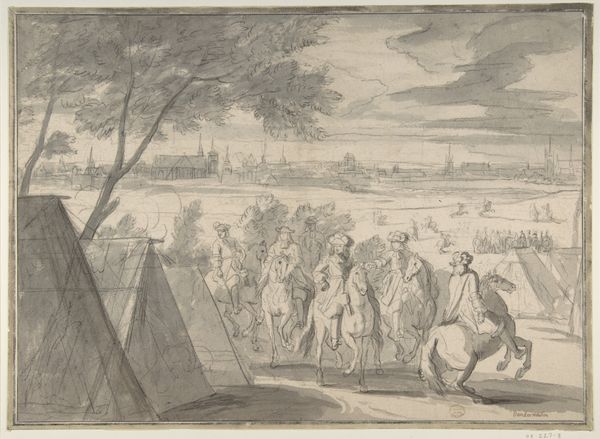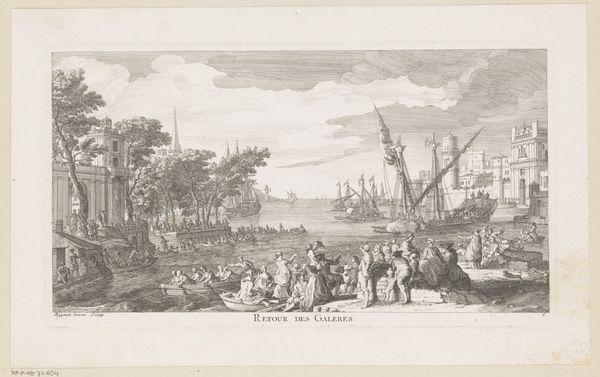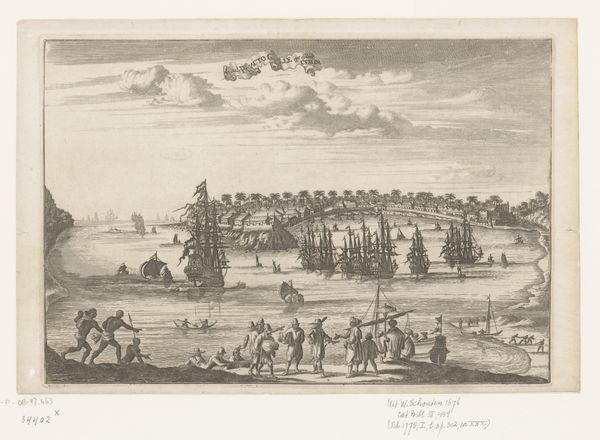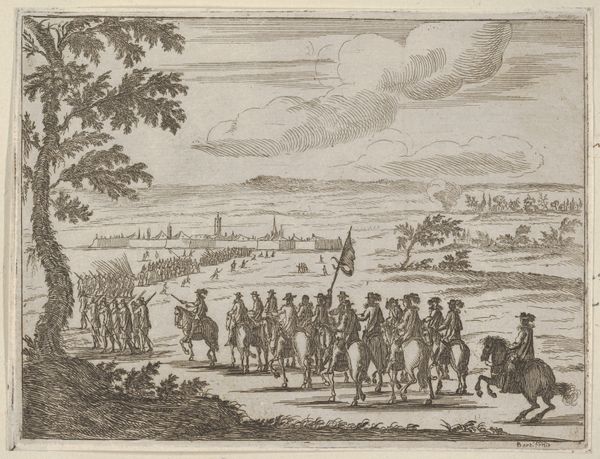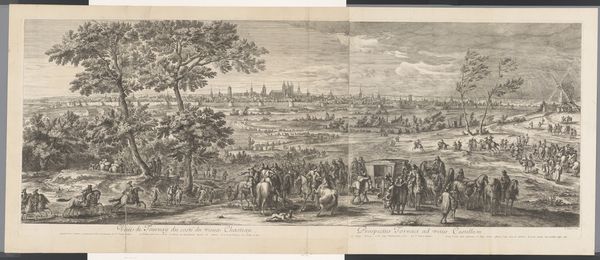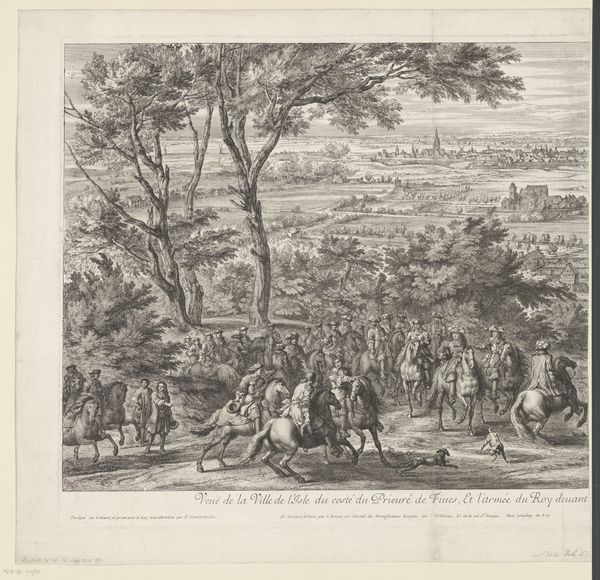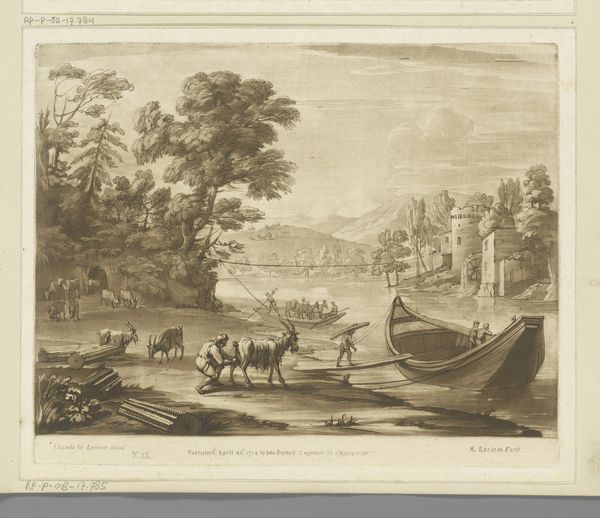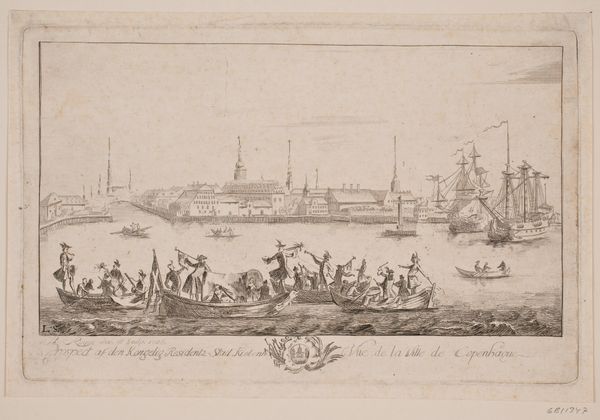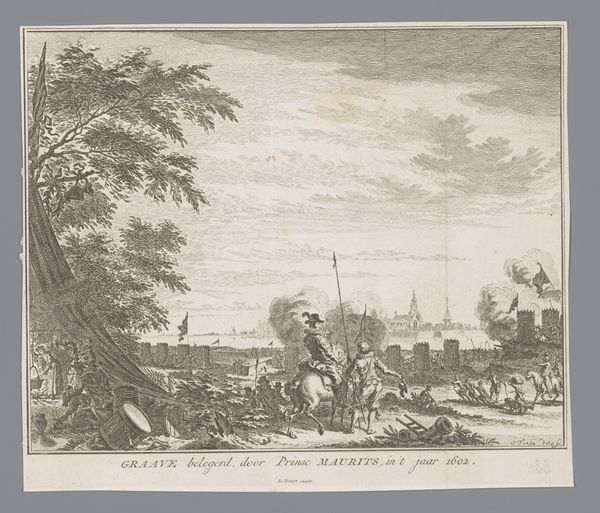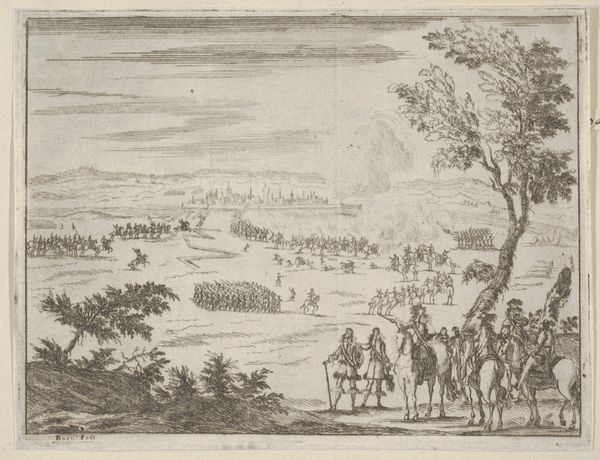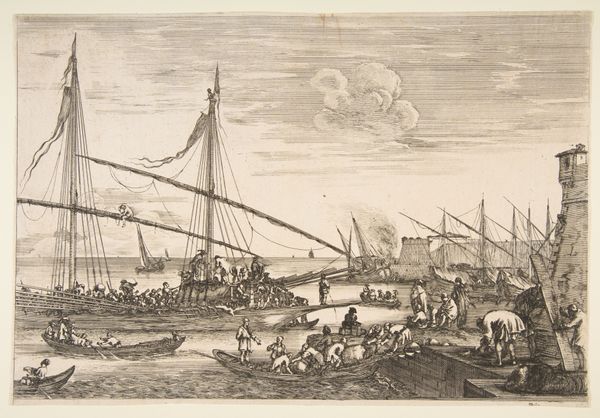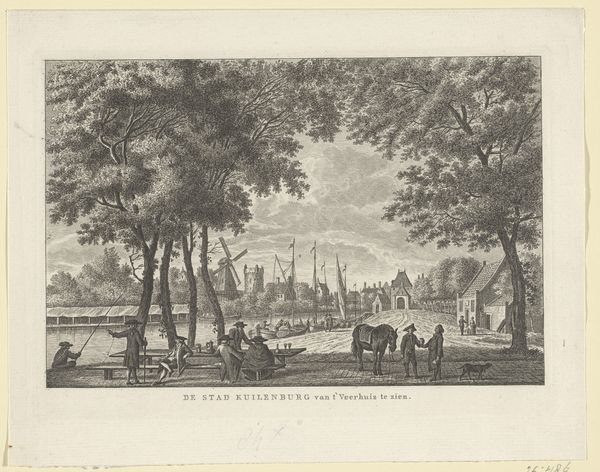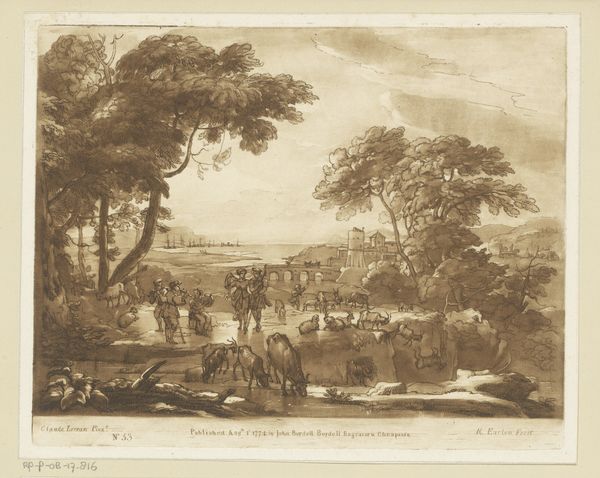
Louis XIV at the Siege of Tournai, Seen from the North-East (June 21-25, 1667) 1645 - 1690
0:00
0:00
drawing, print, etching
#
tree
#
drawing
#
baroque
# print
#
etching
#
landscape
#
etching
#
horse
#
cityscape
#
history-painting
#
building
Dimensions: sheet: 12 x 16 7/16 in. (30.5 x 41.8 cm)
Copyright: Public Domain
Curator: This understated print, rendered in etching, captures "Louis XIV at the Siege of Tournai, Seen from the North-East," an artwork conceived between 1645 and 1690 by Adam van der Meulen. What stands out to you as you first observe this piece? Editor: The tonal restraint is striking; the subtle greys lend a rather somber, almost melancholic mood to a scene presumably intended to depict military victory and power. The linear perspective flattens the depth of field while at the same time, the many figures feel like shapes embedded in the design as much as agents of the story. Curator: Indeed. Van der Meulen was primarily known for documenting Louis XIV's military campaigns. Considering this was during the Baroque period, a time marked by grandeur and overt displays of authority, how does this image operate as a product, and possibly, a subversion, of its context? Editor: Well, if we consider etching as a reproducible medium, this piece serves a propaganda purpose. The relative simplicity allowed for easier and wider dissemination, making it accessible beyond the court—but to what audience? Furthermore, its departure from color speaks volumes. Curator: Precisely! The absence of color democratizes it in a sense, it transforms it from a luxurious commodity accessible to only a small privileged class to something attainable to a broader market. Also, let's not disregard that the act of besieging, that is, of attacking urban settlements with violence, often relied on exploited labor, while enriching arms traders. Editor: I see how the muted palette might serve to highlight this socio-political aspect, offering more than mere reportage, but this also enhances the spatial relationships on purely compositional terms; the stark contrast highlights key structural elements... I notice the trees. How is nature rendered, and to what symbolic extent? Curator: The landscape isn't simply a backdrop; it’s actively shaping the narrative. It's a negotiation between nature, military enterprise and production in the service of royal authority. Trees rendered with simple hatching, become signifiers of place, objects to mine for raw materials useful to the military campaign depicted. Editor: Yes, that contrast between cultivated space and implied, threatening nature reinforces the centralizing power that the image seems, to a certain extent, also to criticize. The city becomes an abstract idea, defined more by military control and material consumption than a concrete place of dwelling. Curator: Well put. The intersection between artistry and production is complex, forcing us to look closely at these works anew! Editor: A point very well-etched, I must admit.
Comments
No comments
Be the first to comment and join the conversation on the ultimate creative platform.
